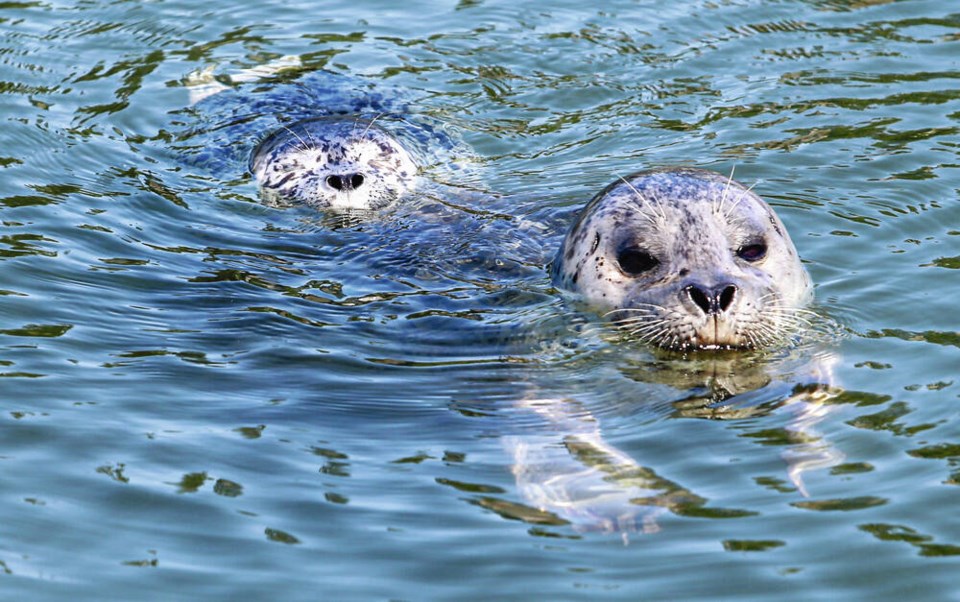A marine mammal rescue centre says it’s monitoring incoming seals for the lethal and contagious avian flu virus, after harbour seals on a small island in Puget Sound were found to be infected.
Tests completed late last week found the H5N1 strain of avian influenza in three adult harbour seals in the sound.
Martin Haulena, the lead veterinarian and director of animal health and research at the Vancouver Aquarium Marine Mammal Rescue Centre, said while no seals with the virus have so far been detected in Canada, it might be just a matter of time.
“Certainly the seals in Washington mix with ours, and they do travel far, so there’s a good chance,” said Haulena. “We are monitoring every seal that comes in.”
The Department of Fisheries and Oceans said it did not have a representative to speak on the issue on Wednesday.
The U.S. Department of Agriculture’s national veterinary service said the seals that tested positive were stranded on Marrowstone Island in Flagler State Park on Aug. 18 and 25. None of the seal pups tested positive, it noted.
The first avian flu cases in marine mammals on the west coast, they followed an ongoing outbreak affecting seabirds on Rat Island and Marrowstone Island since mid-summer, said the U.S. National Marine Fisheries Service. The outbreak has resulted in the deaths of about 1,700 birds, it said.
The islands are next to each other in the northern portion of Puget Sound.
Haulena said avian influenza is fatal for birds, and could also kill seals, sea lions and other pinnipeds.
He said transmission of the avian flu to other species is also possible, including Bigg’s killer whales that feed on harbour seals and are plentiful in the Salish Sea.
Seals often haul out on rocky islets and islands where birds are plentiful, and Haulena said the Puget Sound seals could have caught the virus by ingesting bird feces and other secretions. Seals also occasionally eat birds, he said.
Haulena said sea birds have also died from the influenza strain along B.C.’s coast over the past several years.
Kristin Wilkinson of the U.S. National Marine Fisheries Service said the discovery of H5N1 in seals highlights the potential for cross-species transmission and the complexity of managing infectious diseases in wildlife populations.
“As the investigation continues, the collaboration among agencies remains essential to understanding and addressing this situation,” she said.
Seals have been diagnosed with influenza before. In the late 1970s, the virus was detected in harbour seals in the northeast U.S., and again in the early 1980s.
In the 1990s, several seals died of pneumonia in Cape Cod, Massachusetts. Outside of the U.S., the disease has been found in dead seals in Russia, the United Kingdom and several countries in South America, including hundreds of seals in Peru.
Haulena said seals afflicted with avian flu can suffer from respiratory or neurological issues and often look lethargic. At times, however, infected seals show no signs of being sick.
The aquarium says it does extensive testing on the animals when they are brought to the facility. This year, 64 seal pups were brought to the aquarium and 57 are still on site.
Haulena cautioned anyone who sees a seal in distress not to handle it themselves and to call DFO or the aquarium’s mammal rescue centre.
The World Health Organization in July reported that deadly avian influenza outbreaks are increasing among mammals, including cats and dogs, mink and seals.
In its report, WHO said avian influenza viruses normally spread among birds, but the increasing number of H5N1 avian influenza cases in mammals, which are biologically closer to humans, raises concerns that the virus might adapt to infect humans more easily.
“In addition, some mammals may act as mixing vessels for influenza viruses, leading to the emergence of new viruses that could be more harmful to animals and humans.”
Avian flu in humans has also been reported, but cases remain rare, said the WHO report.
It said eight human cases have been reported since December 2021. “Infections in humans can cause severe disease with a high mortality rate, though human cases detected so far are mostly linked to close contact with infected birds and contaminated environments,” WHO said.
>>> To comment on this article, write a letter to the editor: [email protected]



